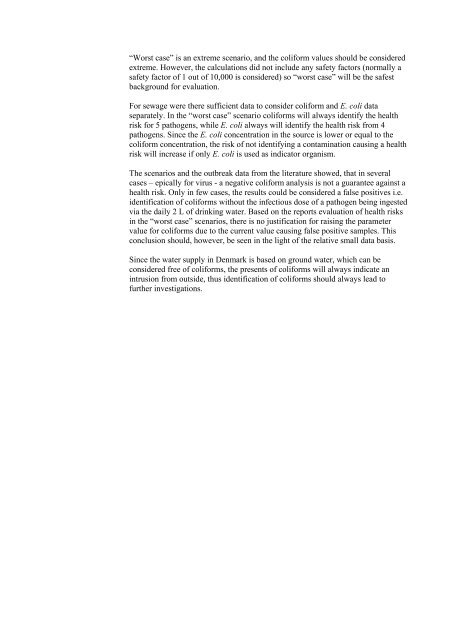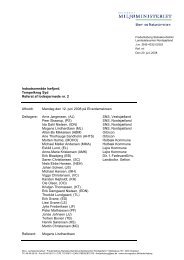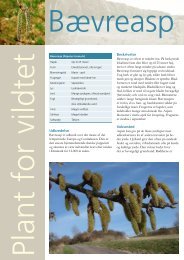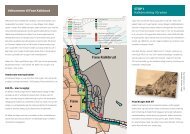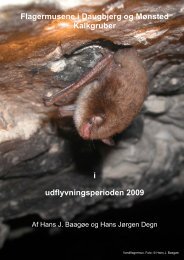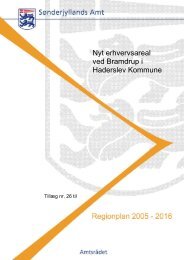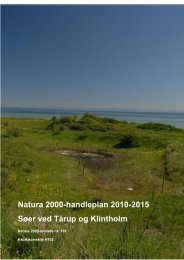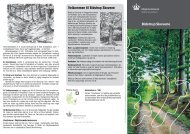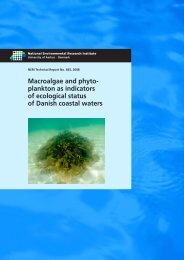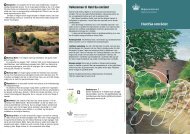Risikovurdering og risikoprofil af forekomst af coliforme bakterier i ...
Risikovurdering og risikoprofil af forekomst af coliforme bakterier i ...
Risikovurdering og risikoprofil af forekomst af coliforme bakterier i ...
Create successful ePaper yourself
Turn your PDF publications into a flip-book with our unique Google optimized e-Paper software.
“Worst case” is an extreme scenario, and the coliform values should be considered<br />
extreme. However, the calculations did not include any s<strong>af</strong>ety factors (normally a<br />
s<strong>af</strong>ety factor of 1 out of 10,000 is considered) so “worst case” will be the s<strong>af</strong>est<br />
background for evaluation.<br />
For sewage were there sufficient data to consider coliform and E. coli data<br />
separately. In the “worst case” scenario coliforms will always identify the health<br />
risk for 5 path<strong>og</strong>ens, while E. coli always will identify the health risk from 4<br />
path<strong>og</strong>ens. Since the E. coli concentration in the source is lower or equal to the<br />
coliform concentration, the risk of not identifying a contamination causing a health<br />
risk will increase if only E. coli is used as indicator organism.<br />
The scenarios and the outbreak data from the literature showed, that in several<br />
cases – epically for virus - a negative coliform analysis is not a guarantee against a<br />
health risk. Only in few cases, the results could be considered a false positives i.e.<br />
identification of coliforms without the infectious dose of a path<strong>og</strong>en being ingested<br />
via the daily 2 L of drinking water. Based on the reports evaluation of health risks<br />
in the “worst case” scenarios, there is no justification for raising the parameter<br />
value for coliforms due to the current value causing false positive samples. This<br />
conclusion should, however, be seen in the light of the relative small data basis.<br />
Since the water supply in Denmark is based on ground water, which can be<br />
considered free of coliforms, the presents of coliforms will always indicate an<br />
intrusion from outside, thus identification of coliforms should always lead to<br />
further investigations.


